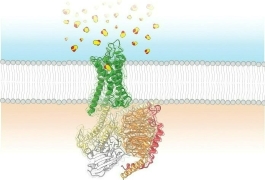How Scent Chemicals in Flowers Perfume the Summer Air
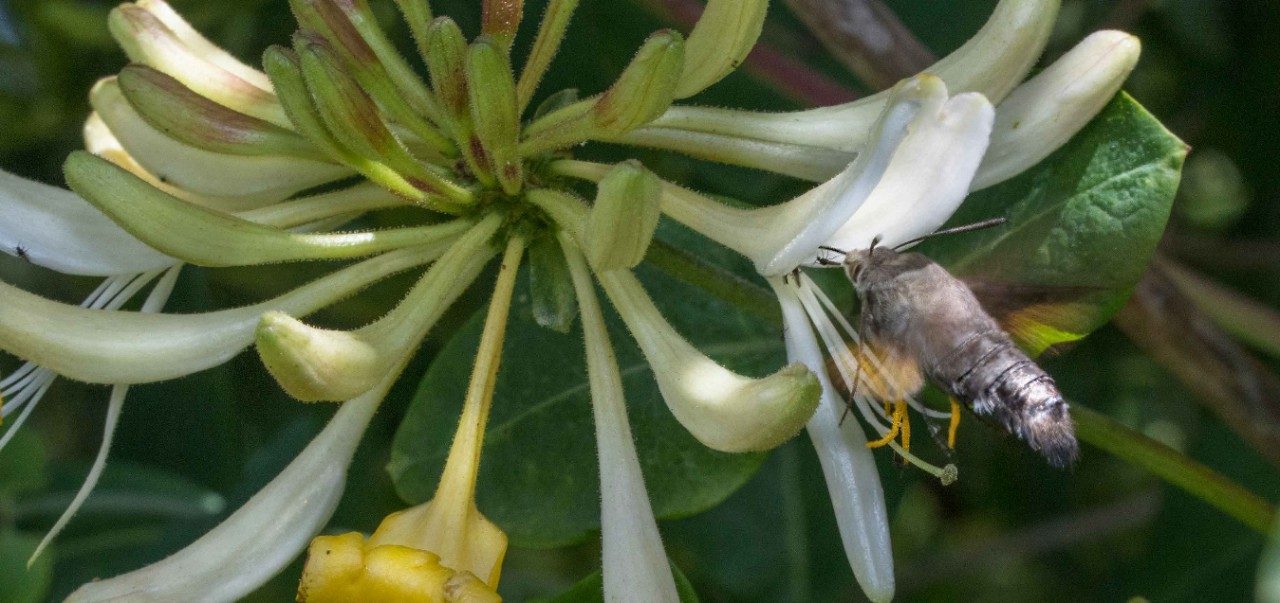
It’s summer time, and that means picnics in the park, backyard barbecues, sunny beach trips, and warm evenings. Summer also is a time when nature perfumes the air with breezes that drift through flowers, spreading enchanting aromas of everything from sweet tropical citrus, to milky vanilla-cherry, to woodsy clove-honey.
Summer scents are the result of chemical cocktails with loads of special properties. And these properties have the power to delight our senses, affect our emotions, and leave a lasting imprint on our memories.
What’s that amazing smell?
The alluring chemical cocktails we smell in the air are a mixture of volatile organic compounds (VOCs) and low-molecular-weight lipophilic (oil- and fat-soluble) liquids. VOCs include alcohols, aldehydes, ketones, esters, and other miscellaneous hydrocarbons. More than 1,700 VOCs have been identified from 90 different plant families.
For an individual flower, the cocktail can comprise over 100 different compounds. For example, the intoxicating flowers of the Lonicera japonica, a species of honeysuckle, have over 150 volatile compounds.
For all flowers, certain compounds tend to dominate. Of the 150 VOCs in honeysuckle, for example, the most recognized are linalool, (Z)-jasmone, (Z)-jasmin lactone, methyl jasmonate, and methyl epi-jasmonate (Ikedia). As shown in the table below, it is the unique combinations of VOCs — especially those that are dominant — that give rise to the distinctive fragrances of individual plants and species.
Dominant Fragrance Compounds in Honeysuckle
Linalool
(floral, slightly spicy)
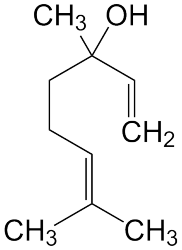
(Z)-jasmone
(spicy, fruity, floral in dilution)
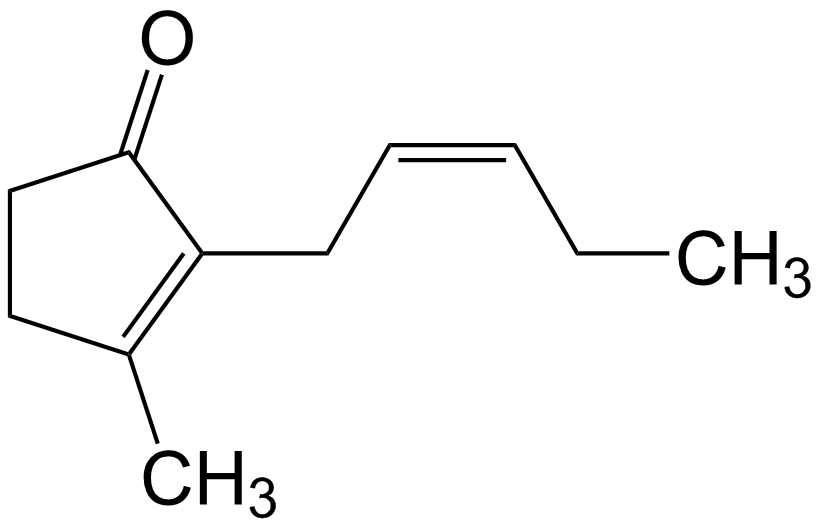
Methyl jasmonate
(floral)
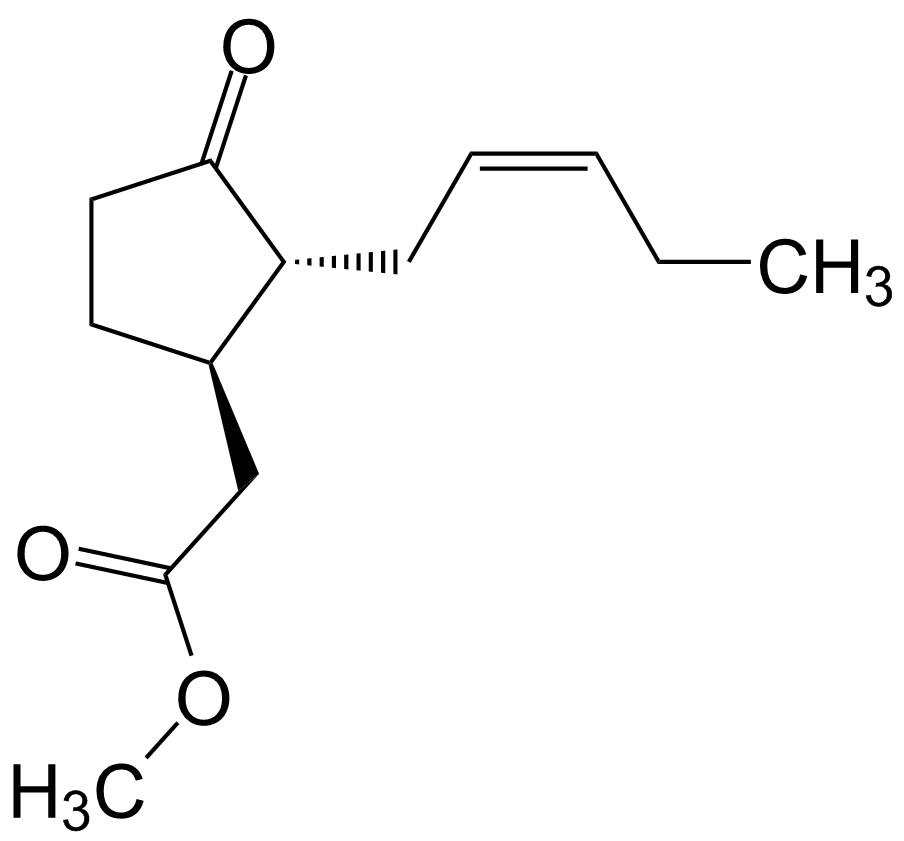
How we smell floral aromas
Our ability to enjoy scents relies on our own personal chemoreception sensors: our noses. The nose contains olfactory receptors that can bind to the odorant molecules entering the nose. Binding changes the overall shape of the molecule, setting off a series of reactions that informs your brain as to what you are smelling. Over 390 olfactory receptors have been identified, which can detect thousands of different odorant chemicals, many at concentrations as low as 1 part per 30 billion.
Different receptors may be specific or generic to odorant binding. The specific set of receptors you have is determined genetically, making smell very personal. You may smell something easily that your friend cannot — based simply on which receptors you each have. One such example is the receptor for asparagusic acid, which is found in asparagus. Some individuals cannot smell the compound at all, while others can detect the scent in their urine.
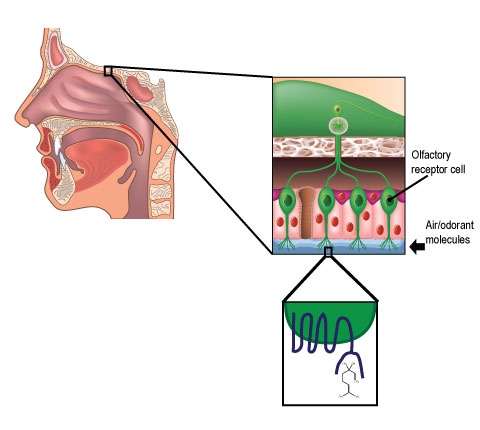
The combination of an individual’s genetic ability to detect an aroma or odor and the complexity of the chemical cocktail produced by flowers makes communicating a fragrance or “smell” difficult. While we might be able to describe a color in just a couple of words, describing a smell may require a variety of adjectives. One may describe a scent using words like floral, woody, fruity, green, musky, spicy, or citrusy. In addition, smells may be associated with feelings, emotions, and memories. This complexity presents challenges for the perfumery industry, because describing scents requires a standardized language and a “calibrated nose.”
Describing a smell may can be similar to describing a piece of music, as a fragrance will have a combination of top, middle, and base notes. The top notes are the most volatile compounds, while the base notes are the least volatile. Volatility plays a role in how long a scent lingers, which can be anywhere from minutes to hours. Volatility can also impact how molecules bind to each other or chemicals in the environment.
Making sense of scents
You might smell roses early in the evening, but when the evening moves toward night, the bouquet may change to scents of jasmine and honeysuckle. There’s a reason for this! The plants aren’t emitting alluring fragrances for humans; in most cases, they are communicating with each other or trying to attract pollinators such as insects, bats, or birds. Some plants, like the carnivorous pitcher plant, are trying to attract food!
Honeysuckle and jasmine use their scents to attract insects that pollinate the plants. As with other plants, their chemical cocktails are designed to be detected by insects and carried into the air. Thus, the compounds produced are low-molecular-weight with high volatility. The size of the molecule allows it to be detected by the olfactory organs of the insects.

The overall fragrant cocktail produced by flowers is also influenced by where the plant performs its biosynthesis of the compounds. The capability of producing a specific compound may be spread through the petals, or in specific scent glands, such as the osmophores in orchids. The location of fragrance production is also dependent upon how the plant wants to attract and direct its specific pollinator around the flower.
Honeysuckle and jasmine direct pollinators to the prize of nectar, which will force the butterfly (honeysuckle) or moth (jasmine) to come into contact with the plant’s reproductive organs, which, ultimately, will exchange pollen from one flower to the next.
Timing matters
A plant’s production of attractants is an energy-intensive process. To balance the use of resources, some plants only produce scent chemicals during specific times of day. Jasmine only produces its scent during the evening and nighttime hours when its own dedicated pollinators (moths) are active. This is why the fragrance carried by a summer breeze changes as the afternoon moves from evening to night.
Even though honeysuckle and jasmine plants produce enticing chemical cocktails to attract butterflies and moths, we humans also get to enjoy the fragrance on a summer evening. And it is not just for a summer evening. We have figured out how to collect these odorant compounds from the plants in support of the fragrance industry so that the scents can be enjoyed at any time. Jasmine seems to be a particular favorite, as it can be found in over 80% of the frangrances in women’s perfumes and in over 30% of those in men’s colognes.
So the next time you sample a scent at the perfume counter or enjoy the smell of honeysuckle and jasmine in the evening, you might take just a second or two to contemplate the amazing, complex biosynthesis that is happening!





